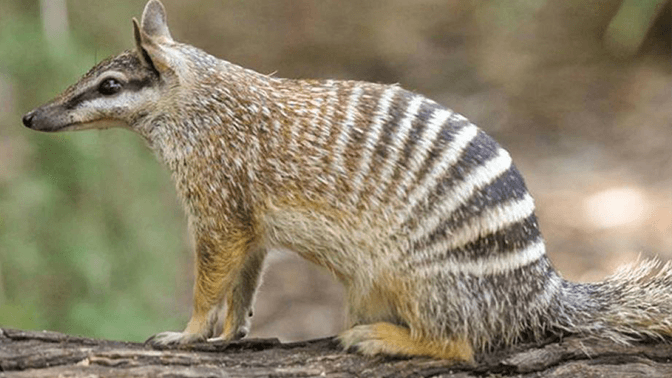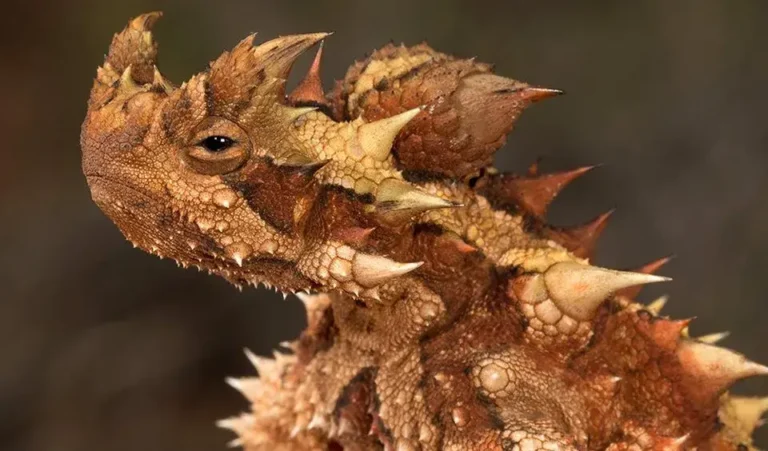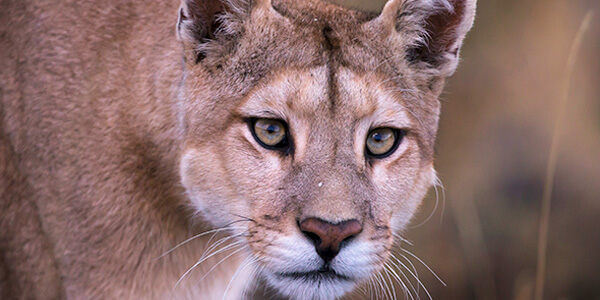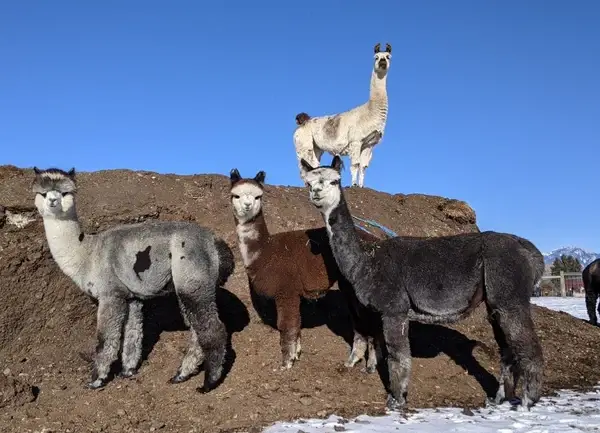Numbat: Facts, Habitat, Diet, Behavior, and Conservation Status
The numbat (Myrmecobius fasciatus) is a fascinating and unique marsupial endemic to Australia. This small, termite-eating mammal has distinctive features and behaviors that have intrigued scientists and conservationists alike. This in-depth article will examine its scientific classification, physical characteristics, habitat, behavior, diet, reproduction, predators, and conservation status.
We’ll delve into its evolutionary history, relationship with humans, and some interesting facts about this remarkable animal.
Contents
Scientific Classification
- Kingdom: Animalia
- Phylum: Chordata
- Class: Mammalia
- Order: Dasyuromorphia
- Family: Myrmecobiidae
- Genus: Myrmecobius
- Species: M. fasciatus
Numbats are the family’s only surviving members of Myrmecobiidae, with no close relatives remaining. Their closest extant relatives belong to the Dasyuridae family, which includes the Tasmanian devil and quolls.
Physical Characteristics

Numbats are small marsupials with a body length of 20–27 cm and a bushy tail that can add another 13–17 cm to their overall size. Weighing between 280 and 700 grams, their slender, pointed snout is a crucial adaptation for their specialized termite diet.
- Fur: Their coat is reddish-brown to grey, marked with prominent white stripes running across their back and rump, aiding in camouflage in their natural environment.
- Tail: The numbat’numbat’stail resembles a small squirrel, acting as a balancing tool while climbing.
- Tongue: One of the numbat’numbat’semarkable physical traits is its long, sticky tongue, which can extend up to 10 cm, perfect for extracting termites from narrow cavities.
- Vision: Numbats have excellent vision, aided by their wide-set eyes, which are essential for spotting predators.
Habitat
Historically, numbats could be found across southern Australia. However, due to habitat destruction and predation, they are now limited to small pockets in Western Australia.
- Preferred Habitat: Numbats thrive in eucalyptus woodlands and open forests, where fallen logs and leaf litter provide cover and support the termite populations on which they feed. The presence of hollow logs is significant for shelter.
- Temperature Adaptation: Numbats are active during the day (diurnal) and exhibit behavioral adaptations to cope with temperature extremes, seeking shelter during the hottest parts of the day.
Behavior

Numbats are solitary animals with well-defined home ranges. They are primarily active during the day, making them one of the few diurnal marsupials in Australia.
- Territoriality: Males and females maintain separate territories, which they mark with scent glands.
- Climbing: Although primarily ground dwellers, numbats are adept climbers and often ascend logs and small trees to search for food or evade predators.
- Communication: Numbats have a range of vocalizations used primarily during mating season or when sensing danger.
Diet
Numbats are specialized myrmecophages, meaning they primarily eat termites. A single numbat consumes up to 20,000 termites a day.
- Feeding Habits: Unlike other termite eaters, numbats do not dig deep into the ground. Instead, they use their strong claws to break into termite nests or dead wood, capturing the insects with their long, sticky tongue.
- Water Needs: Numbats derive most of their water from their diet, rarely needing to drink water directly.
Reproduction
Numbats have a unique reproductive cycle, typical of marsupials, but they lack the well-developed pouches seen in other species like kangaroos.
- Breeding Season: Numbats breed between December and January, with females giving birth to four tiny, underdeveloped young after a gestation period of about 14 days.
- Raising Offspring: The young numbats cling to their mother around six months, protected by the mother instead of a pouch. After weaning, the mother places them in a nest in a hollow log or burrow.
- Maturity: Young numbats become independent at around 12 months of age.
Predators and Threats
Numbats face numerous natural and introduced predators.
- Natural Predators: Native predators include birds of prey, such as eagles and hawks, as well as goannas.
- Introduced Predators: Introducing red foxes and feral cats has decimated numbat populations in many areas, as these predators hunt numbats effectively during daylight hours.
Conservation Status
The numbat is listed as an endangered species by the IUCN Red List.
- Population Decline: Habitat loss due to land clearing and predation by introduced species are the primary causes of their population decline.
- Conservation Efforts: In recent years, conservation programs like captive breeding and the creation of predator-free reserves in Western Australia have seen some success in stabilizing numbat populations. Organizations like the Australian Wildlife Conservancy play a crucial role in numbat protection.
Interesting Facts
- Diurnal Behavior: Numbats are one of the few strictly diurnal marsupials, a trait likely adapted to match the activity pattern of termites.
- No Pouch: Unlike most marsupials, female numbats lack a pouch. Instead, the young cling to the mother for protection.
- Termite Diet: A numbat’numbat’sonsists almost entirely of termites. They consume about 10% of their body weight in termites every day.
Evolutionary History
The numbat’numbat’sors likely diverged from other marsupials millions of years ago, with their evolution being closely linked to the abundance of termites in Australian ecosystems. Fossil evidence suggests that numbats once inhabited a broader range across Australia, but their population and diversity have shrunk dramatically due to changing environmental conditions and human impacts.
Relationship with Humans
While numbats have no direct economic or agricultural significance, they hold a special place in Australian culture and biodiversity conservation.
- Conservation Symbol: Numbats are often used as flagship species for conservation efforts in Western Australia. Their presence in an ecosystem indicates a healthy, functioning environment.
- Ecotourism: Areas where numbats live, such as Dryandra Woodland, are popular with wildlife enthusiasts, contributing to local tourism.
Conclusion
The numbat is remarkable in its ecological niche as a termite-eating marsupial and in its role in Australian efforts. Despite its small size and endangered status, ongoing efforts to protect this species offer hope for its future.
- Golden Retriever Pros and Cons: What Every Pet Parent Should Know - 15 September 2025
- Cane Corso Dog Breed: Health, Care, and Lifespan - 14 September 2025
- Catahoula Leopard Dogs: Description, Temperament, Lifespan, & Facts - 21 July 2025







